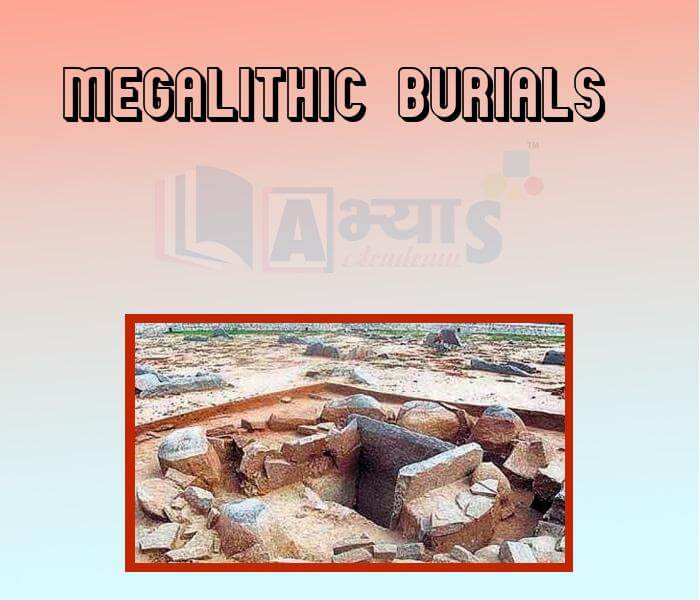Megalithic Burials

Megalithic Burials
Megalithic burials: Some burial sites of the late chalcolithic age and early Iron Age were found marked with megaliths. Certain communities adopted this system of burying the dead. In this, the dead were buried in large stone graves called megalithe. It has been found in tekkalakola and brahmagiri in the Deccan and in Nagarjunkonda in Andhra Pradesh and Adichanallur in Tamil Nadu.
There are various types of megalithic burials. Some are marked with a single stone while some have a number of stones arranged in a pattern. In one form of burial, a burial chamber made of rectangular stone slabs was built inside the pit. A chamber could be used for many burials that is why, we often find several skeletons in a single big chamber. Several object including expensive gold jewels, pottery, tools and weapons have been found as grave good. The quality of good exhibit the financial status of the person buried.
The megalithic burial sites are associated with the spread of the use of iron .Iron tools were used to cut and work the megaliths. The habitations found near these burial grounds are scanty,suggesting that the megaliths were put up by nomadic groups of people as a kind of marker in case they ever wanted to return to this site.
The graves contain several iron implements and weapons .They also contain the bones of a number of animals like the cow ,goat ,sheep ,dog ,horse ,pigs ,birds, crocodile, fish, etc. A variety of pots have also been found in some graves.
Almost all the Chalcolithic sites in central and western India went into a decline between 1500 and 500 BCE. There was a great reduction in rainfaill during this period .Settled agriculture started again here only after 500 BCE. The people led nomadic lives during this period.
Students / Parents Reviews [10]
Being a parent, I saw my daughter improvement in her studies by seeing a good result in all day to day compititive exam TMO, NSO, IEO etc and as well as studies. I have got a fruitful result from my daughter.

Prisha Gupta
8thAbhyas Methodology is very good. It is based on according to student and each child manages accordingly to its properly. Methodology has improved the abilities of students to shine them in future.

Manish Kumar
10thIt has a great methodology. Students here can get analysis to their test quickly.We can learn easily through PPTs and the testing methods are good. We know that where we have to practice

Barkha Arora
10thIt was good as the experience because as we had come here we had been improved in a such envirnment created here.Extra is taught which is beneficial for future.

Eshan Arora
8thIt was a good experience with Abhyas Academy. I even faced problems in starting but slowly and steadily overcomed. Especially reasoning classes helped me a lot.

Cheshta
10thMy experience with Abhyas academy is very good. I did not think that my every subject coming here will be so strong. The main thing is that the online tests had made me learn here more things.

Hiya Gupta
8thMy experience was very good with Abhyas academy. I am studying here from 6th class and I am satisfied by its results in my life. I improved a lot here ahead of school syllabus.

Ayan Ghosh
8thI have spent a wonderful time in Abhyas academy. It has made my reasoning more apt, English more stronger and Maths an interesting subject for me. It has given me a habbit of self studying

Yatharthi Sharma
10thAbout Abhyas metholodology the teachers are very nice and hardworking toward students.The Centre Head Mrs Anu Sethi is also a brilliant teacher.Abhyas has taught me how to overcome problems and has always taken my doubts and suppoeted me.

Shreya Shrivastava
8thOne of the best institutes to develope a child interest in studies.Provides SST and English knowledge also unlike other institutes. Teachers are co operative and friendly online tests andPPT develope practical knowledge also.








